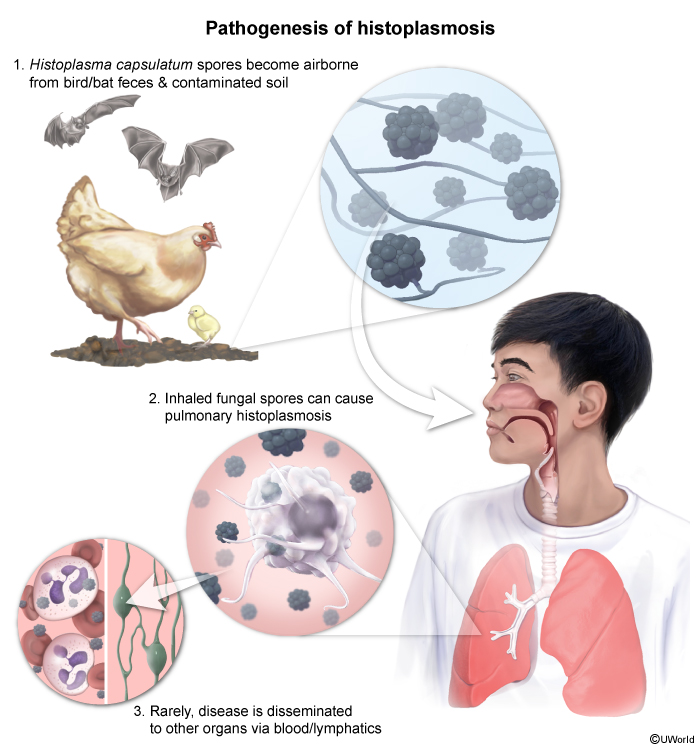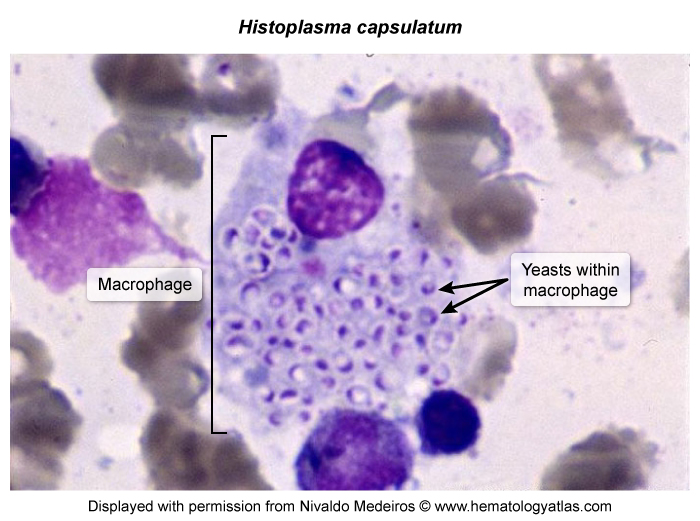Histoplasmosis
Article Sections
Introduction
The systemic mycoses include 3 fungal infections: histoplasmosis (Histoplasma capsulatum), blastomycosis (Blastomyces dermatitidis), and coccidioidomycosis (Coccidioides immitis) (Table 1). This article specifically addresses histoplasmosis. Although there are differences in their geographic distribution and pattern of organ involvement, the systemic mycoses share fundamental similarities:
- Endemic: ubiquitous in the soil (ie, community-acquired) and easily aerosolized.
- Dimorphic: exist as a mold (ie, hyphal form) in the environment, but as an intracellular (mainly in macrophages) budding yeast or spherules in human hosts.
- Pulmonary: manifest primarily as a pneumonia, with potential extrapulmonary involvement as well (eg, lymph nodes [histoplasmosis], skin and bone [blastomycosis], and meninges [coccidioidomycosis]).
- Nonopportunistic: able to cause significant local infection (eg, pneumonia) in immunocompetent hosts (with sufficient inoculum). They also have a propensity to cause disseminated disease in immunocompromised patients.
Continue Learning with UWorld
Get the full Histoplasmosis article plus rich visuals, real-world cases, and in-depth insights from medical experts, all available through the UWorld Medical Library.
Figures

Figure 1
Images

Image 1
Tables
Table 1
Table 2
Table 3
Table 4